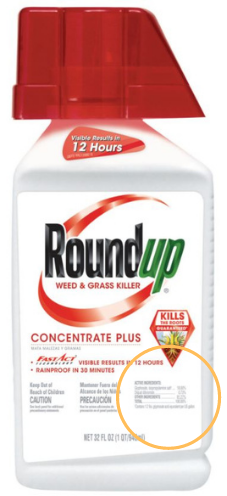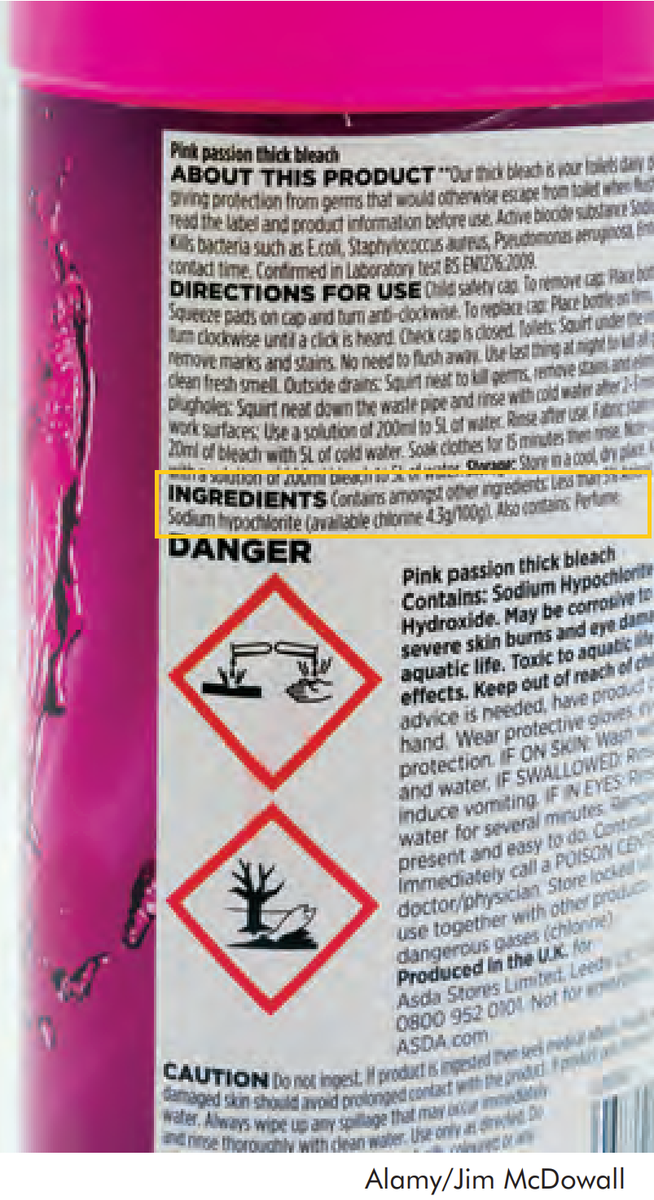Gateway on Pesticide Hazards and Safe Pest Management
How To Find Ingredients in Pesticide Products
Beyond Pesticides offers resources below to evaluate the health and ecological effects of specific chemical exposure from ACTIVE INGREDIENTS in pesticide products, as well as regulatory information and supporting scientific documents. Because various pesticide products can contain more than one active ingredient, it is important to READ the LABEL to determine chemical components.
With 192 different active ingredients and counting, it is essential to establish the connection between the use of these chemicals and their respective hazards.
View the step-by-step guide on how to search for the active ingredient(s) in pesticide products below:
- Go to U.S. EPA's Pesticide Product and Label System and enter the product name. The generic product name may vary.
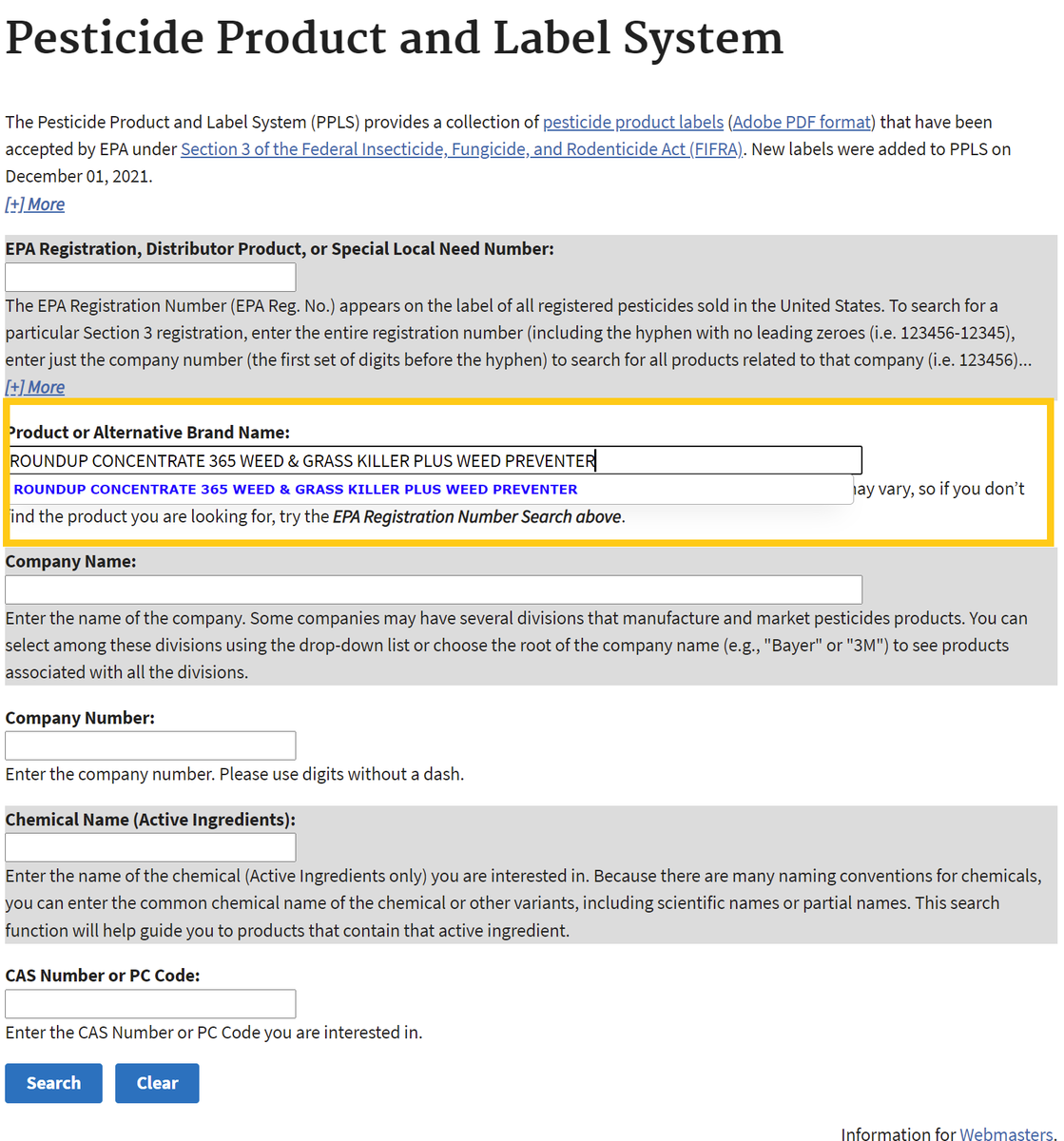
- After searching, click on the chemical ingredients tab or the link for the most recent label to find Active Ingredients.
Chemical List Label List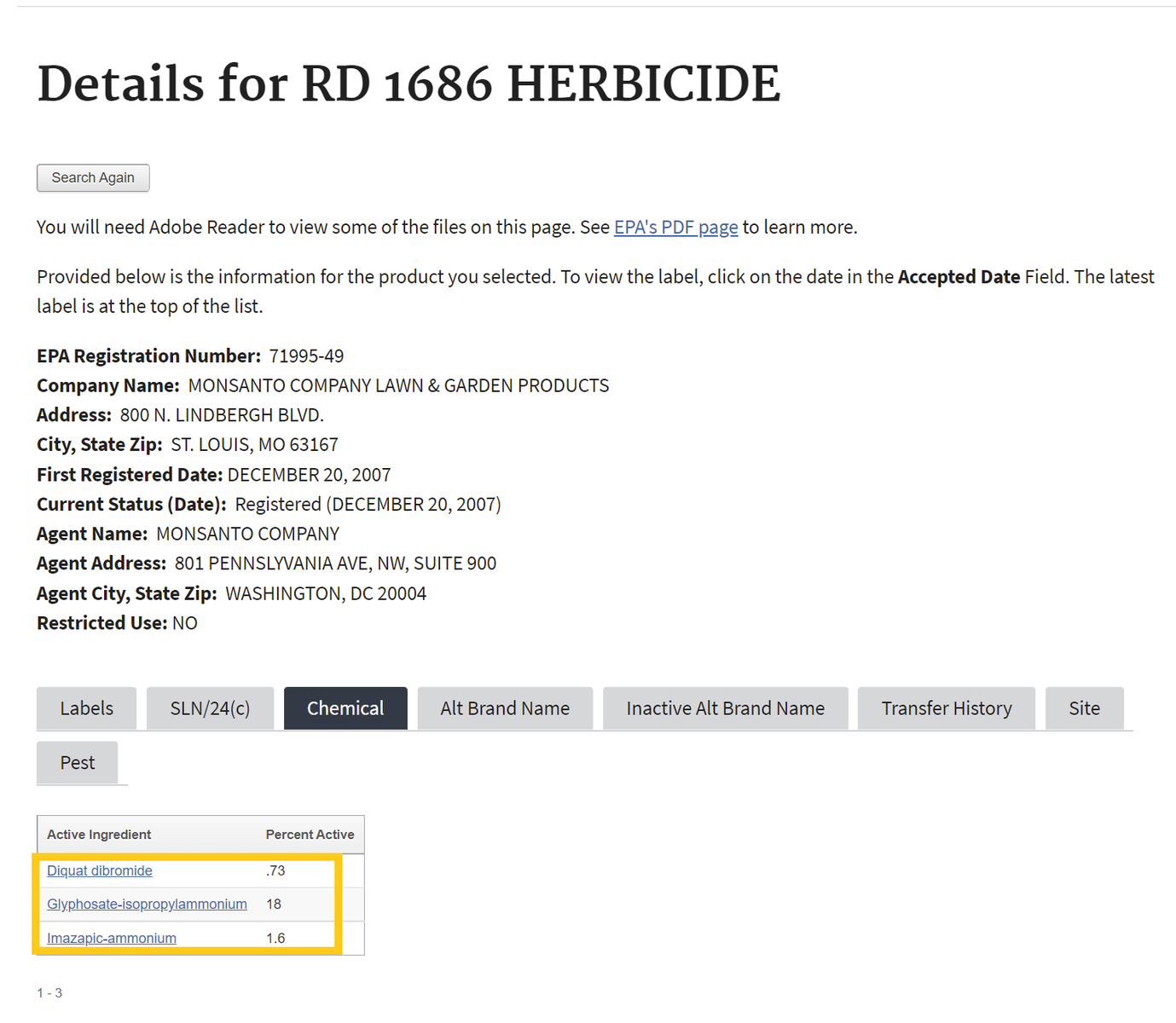
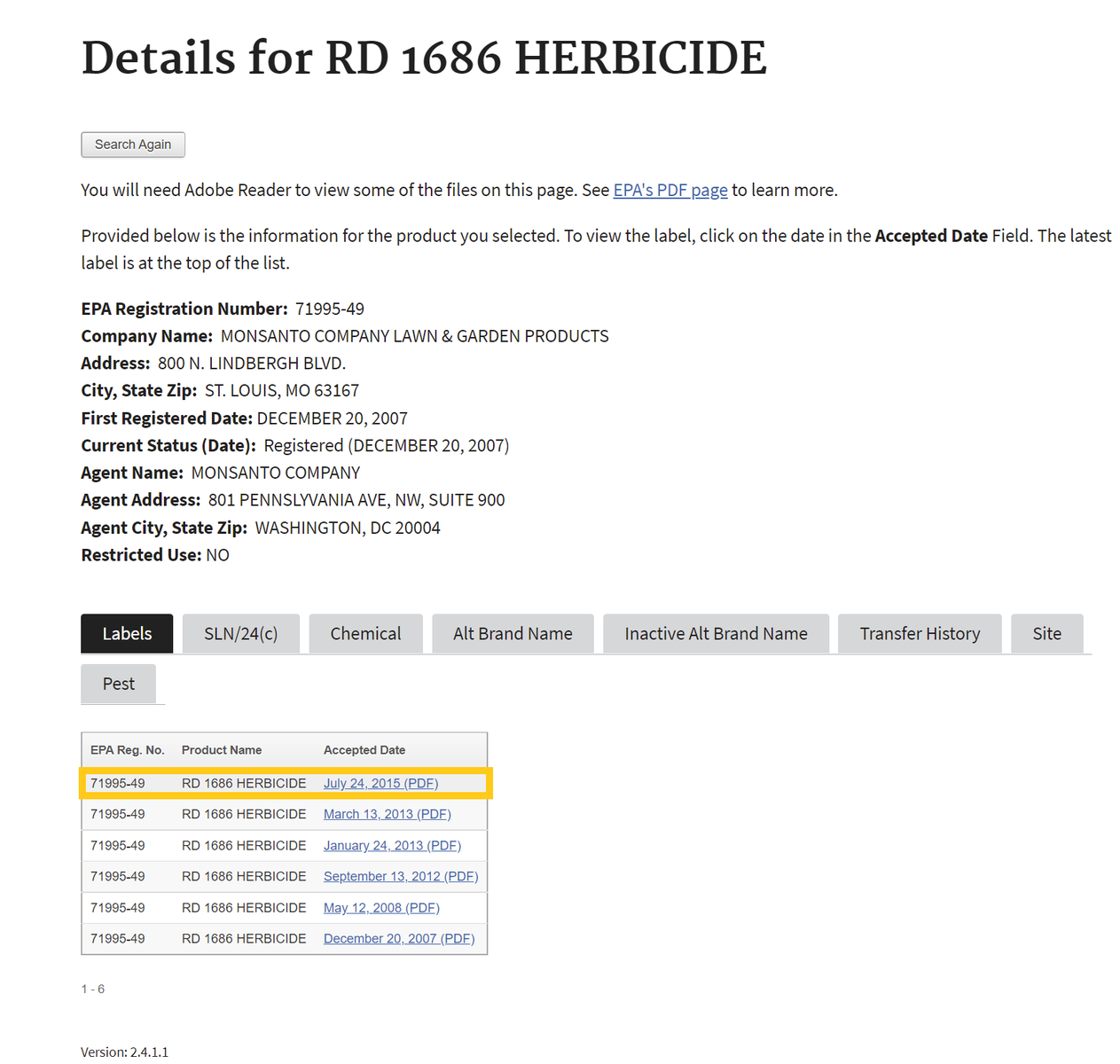
If one selects the chemical ingredients tab, skip to Step 4 . If not, proceed to step number 3 - To find the active ingredient(s) on the label, search for the page in the document containing the date of registration. Usually, the active ingredients section occurs within the first few pages of the label document.
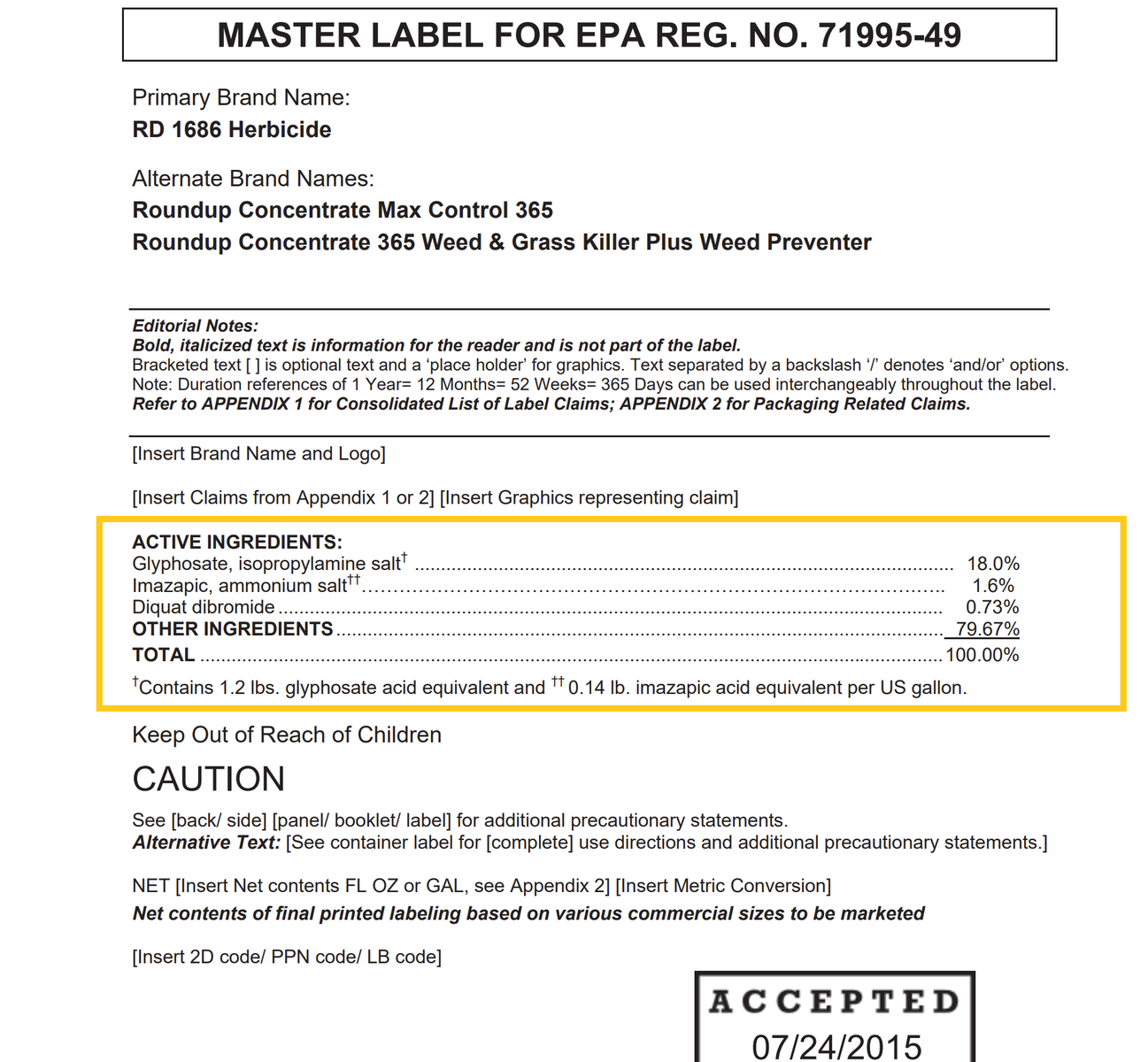
- Return to the Beyond Pesticides Gateway and search for the active ingredient name in the yellow box to the right or from the list below.
Cyfluthrin
General Information
- Fact Sheets: cyfluthrin.pdf, Synthetic Pyrethroids.pdf
- Product Names:
- Chemical Class: Synthetic pyrethroid insecticide
- Uses: Agriculture and food handling, Mosquito control
- Alternatives: Organic agriculture, Least-Toxics
- Beyond Pesticides rating: Toxic
Health and Environmental Effects
- Cancer: Not documented
- Endocrine Disruption: Possible (158, 159)
- Reproductive Effects: Yes (4)
- Neurotoxicity: Yes (4)
- Kidney/Liver Damage: Yes (4)
- Sensitizer/ Irritant: Yes (4, 13)
- Birth/Developmental: Likely (157)
- Detected in Groundwater: Not documented
- Potential Leacher: Not documented
- Toxic to Birds: Yes (40)
- Toxic to Fish/Aquatic Organisms: Yes (4)
- Toxic to Bees: Yes (4)
Residential Uses as Found in the ManageSafe™ Database
- Bagworms
- Carpenter Ants
- Carpenter Bees
- Tree-boring Caterpillars
- Cockroaches
- Ants
- Bed Bugs
- Chinch Bugs
- Fleas
- Gypsy Moths
- Spiders
- Chiggers
- Grubs
- Termites
- Ticks
- Wasps and Yellowjackets
- Thrips
- Fire Ants
Additional Information
- Supporting information:
- Daily News Blog entries (Beyond Pesticides)
- Asthma, Children and Pesticides (Beyond Pesticides)
- NCAP Cyfluthrin Factsheet (Northwest Coalition for Alternatives to Pesticides)
- Extoxnet Cyfluthrin Factsheet (Extension Toxicology Network)
- PAN Pesticides Database:Cyfluthrin (Pesticide Action Network)
- Studies:
- Common Pesticides Poison Homes (Beyond Pesticides)
- Assessing Field‐Scale Risks of Foliar Insecticide Applications to Monarch Butterfly (Danaus plexippus) Larvae. Krishnan, N., Zhang, Y., Bidne, K.G., Hellmich, R.L., Coats, J.R. and Bradbury, S.P., 2020. Environmental Toxicology and Chemistry, 39(4), pp.923-941.
- Pesticide residues in bee bread, propolis, beeswax and royal jelly – A review of the literature and dietary risk assessment . Végh, R., Csóka, M., Mednyánszky, Z. and Sipos, L., 2023. Food and Chemical Toxicology, p.113806.
- Pesticides: An alarming detriment to health and the environment. Kaur R;Choudhary D;Bali S;Bandral SS;Singh V;Ahmad MA;Rani N;Singh TG;Chandrasekaran B; Pesticides: An alarming detrimental to health and environment, The Science of the total environment. Available at: https://www.pubmed.ncbi.nlm.nih.gov/38232846/
- Mixture effects of thiamethoxam and seven pesticides with different modes of action on honey bees (Aplis mellifera). Li, W. et al. (2023) Mixture effects of thiamethoxam and seven pesticides with different modes of action on honey bees (Aplis mellifera), Scientific Reports. Available at: https://www.nature.com/articles/s41598-023-29837-w#ref-CR30.
- Pre-Conception And First Trimester Exposure To Pesticides And Associations With Stillbirth. Furlong, M. et al. (2024) Pre-conception and first trimester exposure to pesticides and associations with stillbirth, American Journal of Epidemiology. Available at: https://academic.oup.com/aje/advance-article-abstract/doi/10.1093/aje/kwae198/7714541.
- Gestational Exposure to Cyfluthrin through Endoplasmic Reticulum (ER) Stress—Mediated PERK Signaling Pathway Impairs Placental Development. Ni, W. et al. (2022) Gestational exposure to cyfluthrin through endoplasmic reticulum (ER) stress-mediated perk signaling pathway impairs placental development, Toxics. Available at: https://www.mdpi.com/2305-6304/10/12/733.
- Cyfluthrin exposure during pregnancy causes neurotoxicity in offspring—Ca2+ overload via IP3R-GRP75-VDAC1 pathway. Haoxuan Gao, Mi Tian, Xiaozhe Geng, Ji Zhao, Yanan Song, Bing Wu, Xueyan Tian, Yong Yang, Wensi Ni, Huifang Yang, Cyfluthrin exposure during pregnancy causes neurotoxicity in offspring—Ca2+ overload via IP3R-GRP75-VDAC1 pathway, Ecotoxicology and Environmental Safety, Volume 274, 2024, 116218, ISSN 0147-6513, https://doi.org/10.1016/j.ecoenv.2024.116218.
- The effect of follicullar fluid pesticides and polychlorinated biphenyls concentrations on intracytoplasmic sperm injection (ICSI) embryological and clinical outcome. Al-Hussaini, T. K., Abdelaleem, A. A., Elnashar, I., Shabaan, O. M., Mostafa, R., El-Baz, M. A. H., El-Deek, S. E. M., & Farghaly, T. A. (2018). The effect of follicullar fluid pesticides and polychlorinated biphenyls concentrations on intracytoplasmic sperm injection (ICSI) embryological and clinical outcome. European journal of obstetrics, gynecology, and reproductive biology, 220, 39–43. https://doi.org/10.1016/j.ejogrb.2017.11.003
- Seed coating with a neonicotinoid insecticide negatively affects wild bees. Rundlöf, M., Andersson, G., Bommarco, R. et al. Seed coating with a neonicotinoid insecticide negatively affects wild bees. Nature 521, 77–80 (2015). https://doi.org/10.1038/nature14420
- Assessment of genetic damage levels in agricultural workers exposed to pesticides in Paraíba, Brazil. Carvalho-Gonçalves, L. et al. (2025) Assessment of genetic damage levels in agricultural workers exposed to pesticides in Paraíba, Brazil, Environmental Toxicology and Pharmacology. Available at: https://www.sciencedirect.com/science/article/abs/pii/S1382668925000900.
- Pyrethroid Exposure Reduces Growth and Development of Monarch Butterfly (Lepidoptera: Nymphalidae) Caterpillars. Annie J Krueger, Kathryn Hanford, Thomas J Weissling, Ana M Vélez, Troy D Anderson, Pyrethroid Exposure Reduces Growth and Development of Monarch Butterfly (Lepidoptera: Nymphalidae) Caterpillars, Journal of Insect Science, Volume 21, Issue 2, March 2021, 2, https://doi.org/10.1093/jisesa/ieaa149
- Urinary pesticide biomarkers from adolescence to young adulthood in an agricultural setting in Ecuador: Study of secondary exposure to pesticides among children, adolescents, and adults (ESPINA) 2016 and 2022 examination data. Parajuli, R. et al. (2025) Urinary pesticide biomarkers from adolescence to young adulthood in an agricultural setting in Ecuador: Study of secondary exposure to pesticides among children, adolescents, and adults (ESPINA) 2016 and 2022 examination data, Data in Brief. Available at: https://www.sciencedirect.com/science/article/pii/S2352340925006067.
- Prenatal Insecticide Exposure and Adverse Birth Outcomes: Evidence for Mediation via Disruptions in Amino Acid and Acylcarnitine Metabolism. Ma, Y. et al. (2025) Prenatal Insecticide Exposure and Adverse Birth Outcomes: Evidence for Mediation via Disruptions in Amino Acid and Acylcarnitine Metabolism, Environmental Science & Technology. Available at: https://pubs.acs.org/doi/10.1021/acs.est.5c13454.








.png)
